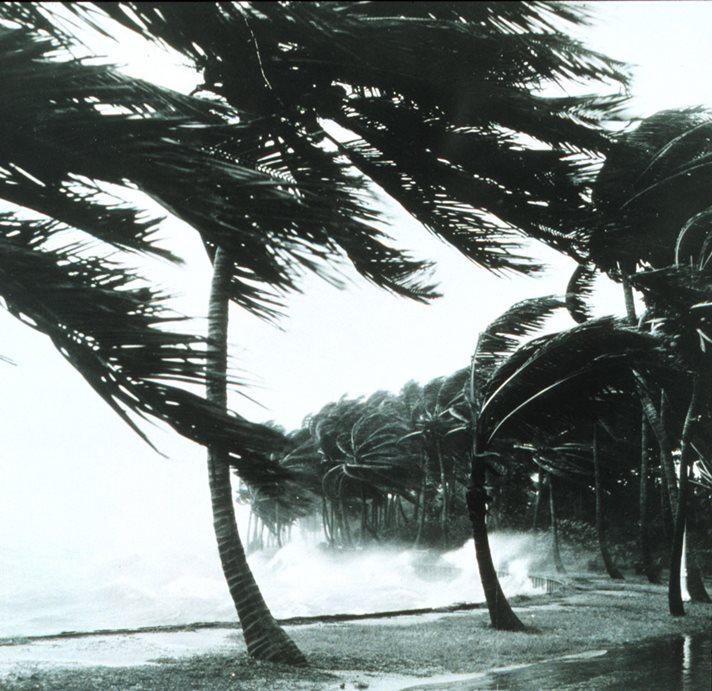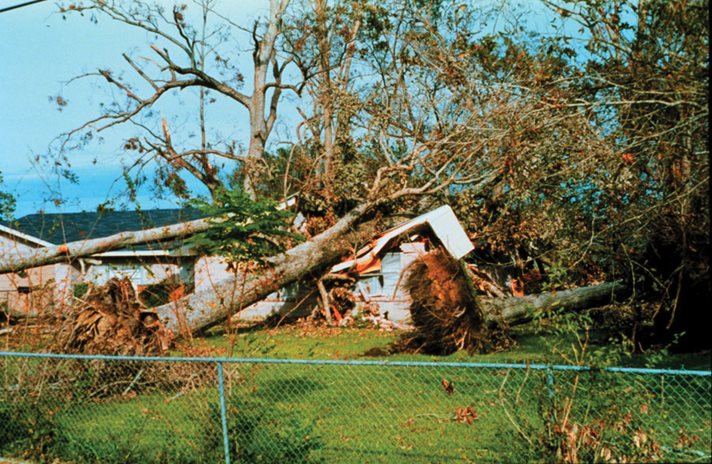Natural Disaster Preparations

When disaster strikes, you may not have much time to act. Communications, transportation, utilities and other essential services could be disrupted by disasters, forcing you to rely initially on your own resources for food, water, first aid, transportation, and shelter. Learn how to protect yourself and cope with disaster by planning ahead.
FEMA, the Federal Emergency Management Agency, offers the following guidelines for personal and family emergency preparedness for a variety of natural and man-made disasters and emergencies, such as a hurricane, tornado, flood, earthquake or fire. These checklists are not complete but they will help you get started.
BE INFORMED
Your key to surviving any emergency is to be prepared. You can lessen an emergency’s impact by knowing what to do before, during, and after one occurs. Although our community could be vulnerable to a variety of hazards, there are certain basic actions you can take now to help you in any emergency. Call Your Emergency Management Office or American Red Cross Chapter to ask the following:
- What disasters could occur in your area?
- How should you prepare for each disaster?
- How would you be warned of an emergency?
- What are your community’s evacuation routes?
- Is there special assistance for elderly or disabled persons?
- Ask your workplace about emergency plans. Additionally, you should:
- Learn about emergency plans for your children’s school or day care center.
- Take a basic first aid & CPR Class – professional medical assistance may not be immediately available.
- Listen or log onto local radio, TV and/or web sites for forecasts and emergency instructions. Post the dial/channel/website listings of these stations or sites for easy access.
- Post all emergency plans/phone numbers in a prominent place.
- Keep phone lines open to notify local authorities of fires, flash floods, tornado sightings, injuries or damage. Do not use the telephone to obtain emergency information.
TAKE FIRE SAFETY PRECAUTIONS
- Install smoke detectors. Clean and test smoke detectors once a month. Change batteries at least once a year.
- Check electrical outlets. Do not overload outlets.
- Purchase a fire extinguisher (5 lb., A-B-C type).
- Have a collapsible ladder on each upper floor of your house.
- Consider installing home sprinklers.
- Keep a whistle in each bedroom to awaken household members in case of fire.
- Remember to stay low to the ground when escaping from a fire.
- Teach never to open doors that are hot. In a fire, feel the bottom of the door with the palm of your hand. If it is hot, do not open the door. Find another way out.
MINIMIZE HOUSEHOLD HAZARDS
In a disaster, ordinary items in the home can cause injury and damage. Anything that can move, fall, break, or cause a fire is a potential hazard.
- Repair leaky gas connections, defective electrical wiring, frayed electrical cords and/or overloaded circuits.
- Repair cracks in ceilings or foundations.
- Go from room to room and imagine what would happen to furniture, appliances, fixtures, and objects during disasters.
- Fasten shelves securely.
- Place large, heavy objects on lower shelves.
- Hang pictures and mirrors away from beds.
- Brace overhead light fixtures.
- Secure water heater. Strap to wall studs.
- Don’t keep rags or paper goods near electrical equipment or flammable materials.
- Place oily polishing rags or waste in covered metal cans.
- Store weed killers, pesticides, and flammable products away from heat sources.
- Clean and repair chimneys, flue pipes, vent connectors, and gas vents.

CREATE AN EMERGENCY PLAN
Conduct family meetings and talk with children about the dangers of fire, severe weather, hurricanes, tornados, and other emergencies.
Determine how each family member should respond in case of these emergencies.
- Discuss what to do about power outages and personal injuries.
- Teach all responsible household members how to turn off the water, gas, and electricity at main switches.
- Instruct household members to turn on the radio for emergency
information.
- Post emergency telephone numbers near telephones.
- Teach children how and when to call 911, police and fire.
- Teach children how to make long distance telephone calls.
- Identify “safe” areas in each room such as in doorways or under sturdy tables in earthquakes, or interior bathrooms or closets on the lowest floor for tornadoes.
- Identify all potential exits for each room in your house.
- Decide on an alternate location to meet if an emergency happens while your household is away from the home and they cannot return.
- Designate someone out-of-state and someone local (friend or relative) for family members to call to get word of your situation if separated by disaster (it is often easier to call out-of-state than within the affected area).
- Decide on two meeting places should you have to leave your home: A place near your home, in case of a fire, and a place outside your neighborhood in case you cannot return home after a disaster.
Put the plan in writing and see that everyone in the family has a copy. Parents, carefully explain safety rules to your children. Conduct evacuation drills periodically.
ESCAPE PLAN
In a fire or other emergency, you may need to evacuate your home at a moment’s notice. Develop an escape plan by drawing a floor plan of your residence and noting pertinent information:
- Use a black or blue pen to show the location of doors, windows, stairways, and large furniture. Indicate the location of emergency supplies (Disaster Supplies Kit), fire extinguishes, smoke detectors, collapsible ladders, first aid kits, and utility shutoff points.
- Use a colored pen to draw a broken line charting at least two escape routes from each room.
- Prominently mark a place outside the home where household members should meet in case of fire. Be sure to include important points outside, such as garages, patios, stairways, elevators, driveways, and porches.
- If your home has more than two floors, use an additional sheet of paper.
- Practice emergency evacuation drills with all household members at least two times each year.
BE PREPARED TO EVACUATE
- Keep a list of household members’ prescribed medications, giving generic names and prescribed dosage. Also list the name and telephone number of your doctor. For those who rely on medical devices such as a pacemaker, the style, serial number, and other pertinent information should be carried with you at all times.
- Keep vital household records in one central location for easy transport in case you must leave the area quickly. These should include items such as mortgage papers, medical records, insurance policies, birth certificates, marriage licenses, wills, stock & bond certificates, tax records & other irreplaceable items. Keep all papers in a water- and fire-proof container.
- Shut off water, gas, and electricity, if instructed to do so.
- Inform others when you leave and where you are going.
- Make arrangements for pets. Animals are not allowed in public shelters.
- Listen to the radio or TV for local emergency instructions. Follow the instructions given. If you are advised to evacuate, do so promptly.
- Use travel routes that are specified or recommended rather than
- trying to find shortcuts of your own. This is especially important during flooding when certain low-lying routes may become impassable.
- Once in a safer area, stay there until authorities tell you it is safe to return home.

ORGANIZE A DISASTER SUPPLIES KIT
Stockpile Food and Supplies – an emergency could isolate you in your home for several days. Assemble supplies you might need in case of an evacuation. Store them in an easy-to-carry container such as a backpack or duffel bag. You should include:
- At least a five-day supply of water (one gallon per person per day). Store water in sealed, unbreakable containers. Identify the storage date and replace every six months.
- A supply of non-perishable packaged or canned food and a non-electric can opener
- Prescription medications
- A first aid kit with manual
- A change of clothing, rain gear, and sturdy shoes
- Blankets or sleeping bags
- An extra pair of glasses
- A battery-powered radio, flashlight, and plenty of extra batteries
- Credit cards and cash
- An extra set of car keys
- A list of family physicians
- A list of important family information; the style and serial number of medical devices, such as pacemakers
- Special items and food for infants, elderly, or disabled family members
- An all-purpose, 5-lb. fire extinguisher (rated A-B-C) to suppress small fires
- A fuel heating device. Follow the manufacturer’s instructions and make sure there is adequate ventilation to avoid build-up of hazardous fumes.
Your local fire department, rescue squad, or American Red Cross chapter can offer advice about items you should include in your first aid kit.
SET UP AN EMERGENCY CAR KIT
Since you may be advised to evacuate your home or workplace
temporarily, you need to be sure your car is also well prepared with:
- Gas – keep your car fueled in case you must leave quickly.
- Battery powered radio and extra batteries
- Flashlight and extra batteries
- Blanket
- Booster cables
- Fire extinguisher (5 lb., A-B-C type)
- First aid kit and manual
- Bottled water and non-perishable high-energy foods, such as granola bars, raisins and peanut butter.
- Maps
- Shovel
- Tire repair kit and pump
- Flares
AFTER THE EMERGENCY
Listen or log on to local radio, TV and/or Web sites for continuing advisories on ways to help recover from the emergency.
Also:
- Use extreme caution when entering buildings that may have been damaged by the disaster. Buildings can collapse without warning.
- Check for leaking gas pipes in your home, by smell Only – don’t use matches or candles. If you smell gas… 1) immediately open windows and doors; 2) turn off the main gas valve; 3) leave the house; 4) go to another location and notify the gas company and/or fire department. Don’t re-enter the house until you are told it is safe to do so.
If any of your electrical appliances are wet, turn off the main power switch in your house, then unplug the wet appliances, dry them out, and check for visible damage. If none, reconnect the appliances and turn on the main power switch.
CAUTION – don’t do any of these things while you are wet or standing in water. If fuses blow when power is restored, turn off the main power switch again and then inspect for short circuits in your home wiring, appliances, and equipment. Call the utility company for help.
- Use only battery-powered lanterns or flashlights to examine your home for damage, as flammables may be inside.
- Check food and water supplies before using them. Refrigerated foods may spoil if power is off for some time. Don’t eat fresh food that has come in contact with flood water. Follow broadcast instructions concerning the use of food and water supplies.
- Check to see that sewage lines are intact before flushing toilets.
- Report damaged water, sewage, and gas lines to the proper authorities.
- If you must use your car, drive carefully along streets and avoid debris. Watch for loose, dangling, or broken wires, and report them to the fire department or utility company.
- Don’t visit the disaster area, as you may hamper rescue efforts.
- Notify your insurance agent or broker if your property was damaged.
The Federal Emergency Management Agency’s Community and Family Preparedness Program and the American Red Cross Community Disaster Education Program are nationwide efforts to help people prepare for all types of disasters. For more information please contact your local emergency management office and American Red Cross chapter. Preparedness materials and publications are available by calling FEMA at1-800-480-2520 or writing: FEMA, PO Box 2012, Jessup, MD 20794-2010, or via the World Wide Web at www.fema.gov and www.redcross.org Article Sources: The Federal Emergency Management Agency and The National Association of Home Builders
Image Courtesy of National Oceanic and Atmospheric Administration